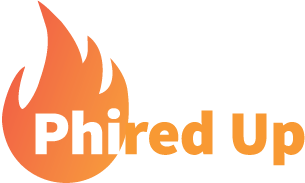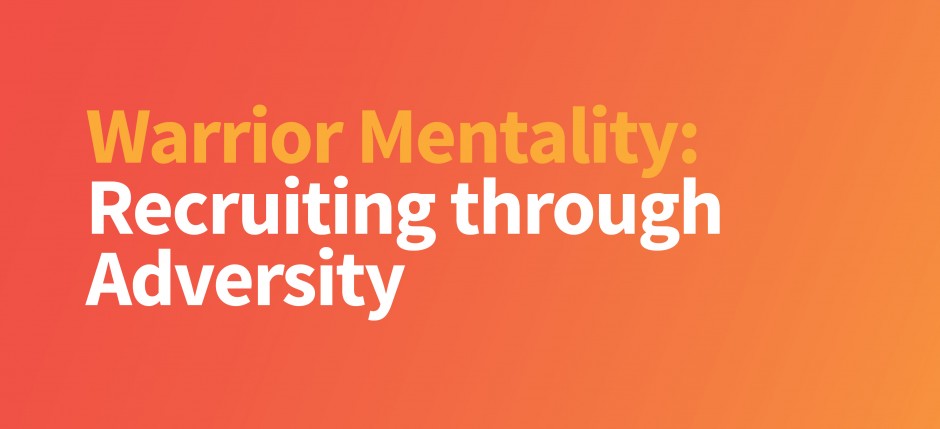Warrior Mentality: Recruiting through Adversity
by Matt Farrell
Why would people join your organization when almost everyone is off-campus?
How do you build a brand out of thin air?
Who else can help if you only have one person on your team?
Four years ago, Adil Dittmer ( left) started a brand new fraternity chapter at Wayne State University – where less than 1% of the (mostly commuting) students were in a fraternity.
He had to answer these big questions that are suddenly more relevant across colleges nationwide.
Four years later, Adil credits the experience for driving his professional career – he currently works for a tech startup in the DC area.
I caught up with Adil to share his experience for recruiters today. What can you gain from Adil’s story?
Matt: The task you had in front of you at Wayne State is one of the more challenging ones I can remember. In a lot of ways, it felt like COVID before COVID. Yet there was a weird excitement that wasn’t present at “easier” recruitment schools.
What do you remember from the beginning?
Adil: It felt like a create-your-own-adventure. It wasn’t pre-planned by either of my supervisors, which is a highly underappreciated aspect of any job – the amount of work your supervisors do to put you in position to be successful.
The group was expected to be smaller than what we were used to, and we really could develop recruitment strategies and organizational practices that hadn’t been done before. In a way it was the perfect lab experiment in a professional environment.
I felt like there were a lot of doubters as to whether it could be successful. Human nature is to want to prove these people wrong. Now, I’m even-tempered enough to realize that expectations exist for a reason.
So, there were two parts to my mentality going in. Which I think a lot of students are feeling right now.
First the strategic part, to help the fraternity grow.
And then there’s the selfish part too. I wanted to shape my own career path. And to challenge the traditional expectations held by some of the doubters.
Matt: Describe the biggest challenges you faced. As it relates to students today.
Adil:
-
Explaining our process to people who had never seen recruitment done this way.
-
Building brand identity.
-
Only one person doing the work with me.
Matt: I’d love a breakdown of how you handled all three of those.
Adil:
Handling people who had never seen recruitment done this way
Everyone was used to a formal process. But all recruitment is, in any other industry, adding value to people through 1 on 1 conversations. So we just tried to put our heads down and do that. ChapterBuilder tracked everything.
What I’d say to recruiters now is, don’t worry about creating value out of nowhere for your future members. Start with making sure they’re taking advantage of things they’re already paying for in their tuition, that they might not know exist.
We got really engaged in the Dean of Students office, and we would hear our future members say things like “This is what I did growing up in Scouts, or in the National Honor Society.” It didn’t cost us a penny.
In my current job, we hear complaints from both sides. Schools are trying to point students to the countless resources, departments and organizations on campus. Students don’t always realize that. They’re asking, “Why should I pay tuition if I can’t be on campus?”
I’d argue that even before COVID, students weren’t taking full advantage of everything that was available to them on campus. As fraternities, we need to always be explaining the need for people to get the most bang for their buck out of college’s offerings, and that student success is directly linked with involvement on campus.
Building brand identity
So honestly, I never thought about this much at my undergrad. Brand identity basically came from having people over for wings. People are used to the idea of, you throw an event – and people come.
But I started to realize that people don’t care about the event, they care about the people who are there. Students probably see hundreds of flyers, facebook posts and instagram stories about events on campus every day. I recognized that students decide to go to these events based on who else they know will be there. I love to eat as much as the next guy, but a 15 minute conversation where you make a connection will stand out more than the food you’re offering because it’s a nonchalant way to build a relationship with someone, which is what they actually want.
So, we didn’t waste our time making super cool events because no one knew us yet. I’d imagine that’s really similar to what students are facing this year. Not being able to plan that super cool in-person event might feel like a setback, but there are so many other ways to create that connection – zoom, texting, phone calls etc.
Whatever situation you are in reading this, it’s so important to spend time meeting professors, the Dean, or anyone else that really understands what students on your campus need. Dean Strauss at Wayne State did a tremendous job helping us understand which students would benefit the most from the experience we were offering. We then invited him to get pizza with our local alumni, and he ended up sitting next to an alum that had been his son’s counselor at a summer sleepaway camp. What a small world!
Stuff like that happens when you learn about people and invest in the relationship, and it’s a great way to get a list of students that would be a good fit from any department on campus.
Only one person doing the work with me
My partner Adam was amazing, and he’s probably going to read this so Hi Adam!
But we faced a lot of rejection. Rejection takes its toll, but it’s also a big part of the growth cycle.
There’s only so many conversations one or two people can have in a day. But as soon as you get two more people to join your group, that doubles. So that was the biggest breakthrough for us.
Empower those brand new people to have as many conversations as you. That’s how you multiply. Our focus was on educating as many people as possible. Putting them in a position to spread the word about our organization as much as they can. If they can answer other people’s questions and invest in them, that’s a dramatic increase in who we can reach.
Matt: We’re writing this four years later. You’re living in DC, continuing to grow in a cool job. You still use these skills everyday, right? What’s one trait that’s stayed with you most?
Adil: Resiliency. I wouldn’t have used that word to describe myself right out of college. This recruitment experience helped build it. Challenge after challenge, setback after setback that we didn’t have a playbook for.
Always having to ask myself: How do we adapt? How do we stay glass half full?
I learned more in that six week stretch than the other two years working for my fraternity. I learned that growth happens in a lot of different ways.
It’s hard to quantify that, but recruiting at Wayne State was a breakthrough moment for me. Challenge-seeking is still a big part of my identity.
I’d love for virtual recruiting through COVID to be a breakthrough moment for whoever is reading this.

